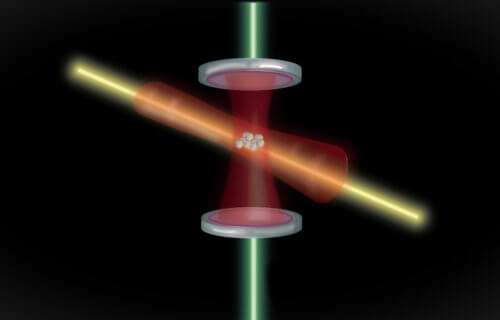CAMBRIDGE, Mass. — If you’re planning to keep track of time since the beginning of the universe, you better bring a good watch. Physicists from MIT say they have just the one for you too. Researchers says their new version of an atomic clock is so accurate it would be less than a tenth of a second off – after about 14 billion years.
The study finds the clock could help scientists detect dark matter, th vc xthe universe together. The most precise devices of this kind to date can also enable researchers to study gravity’s effect on time.
The new atomic clock is based on a bizarre phenomenon called quantum entanglement. This takes place when two separate particles or groups of particles become inextricably linked to each other. The MIT team uncovered the clock’s unprecedented performance by measuring a rare Earth element called ytterbium.
Other atomic clock techniques use randomly oscillating atoms, which is five times less effective, the physicists say. Over the entire age of the universe, the MIT invention would be less than 100 milliseconds off, or 0.1 second.
“Entanglement-enhanced optical atomic clocks will have the potential to reach a better precision in one second than current state-of-the-art optical clocks,” says lead author and electronic engineer Dr. Edwin Pedrozo-Penafiel in a university release.
Speeding up the atomic clock
Atomic clocks use lasers to measure the vibrations of atoms which oscillate at a constant frequency, like microscopic pendulums swinging in sync. They are the most stable observable periodic events. The best clocks in the world would only be off by about half a second today if they had been running since the Big Bang.
The creation of even better atomic clocks opens the door to answering mind-bending questions about time, the speed of light, and the universe itself. The futuristic machine, described in the journal Nature, entangles around 350 atoms of ytterbium which oscillate at the same high frequency as visible light.
Any one atom vibrates 100,000 times more often in one second than the current standard of clock measurement, atoms of cesium. The method involves cooling and trapping them in an optical cavity formed by two mirrors. A laser beam is then ping-ponged between them, interacting with the atoms thousands of times.
“It’s like the light serves as a communication link between atoms,” Dr Chi Shu explains. “The first atom that sees this light will modify the light slightly, and that light also modifies the second atom, and the third atom, and through many cycles, the atoms collectively know each other and start behaving similarly.”
Answering science’s greatest questions
In this way, the atoms are quantumly entangled. Another laser, similar to existing atomic clocks, then measures their average frequency. The record-breaking gadget reached a desired precision four times faster than a similar experiment in which atoms were not entangled.
“You can always make the clock more accurate by measuring longer,” MIT professor of physics Vladan Vuletic says. “The question is, how long do you need to reach a certain precision. Many phenomena need to be measured on fast timescales.”
Vuletic hopes this atomic clock will get the chance to decipher signals in the universe such as dark matter and gravitational waves. This may also start to answer some age-old questions.
“As the universe ages, does the speed of light change? Does the charge of the electron change?” the study co-author asks. “That’s what you can probe with more precise atomic clocks.”
Scientists believe dark matter makes up 80 percent of the universe, but it has never been seen since it doesn’t emit, reflect, or absorb light.
SWNS writer Mark Waghorn contributed to this report.
